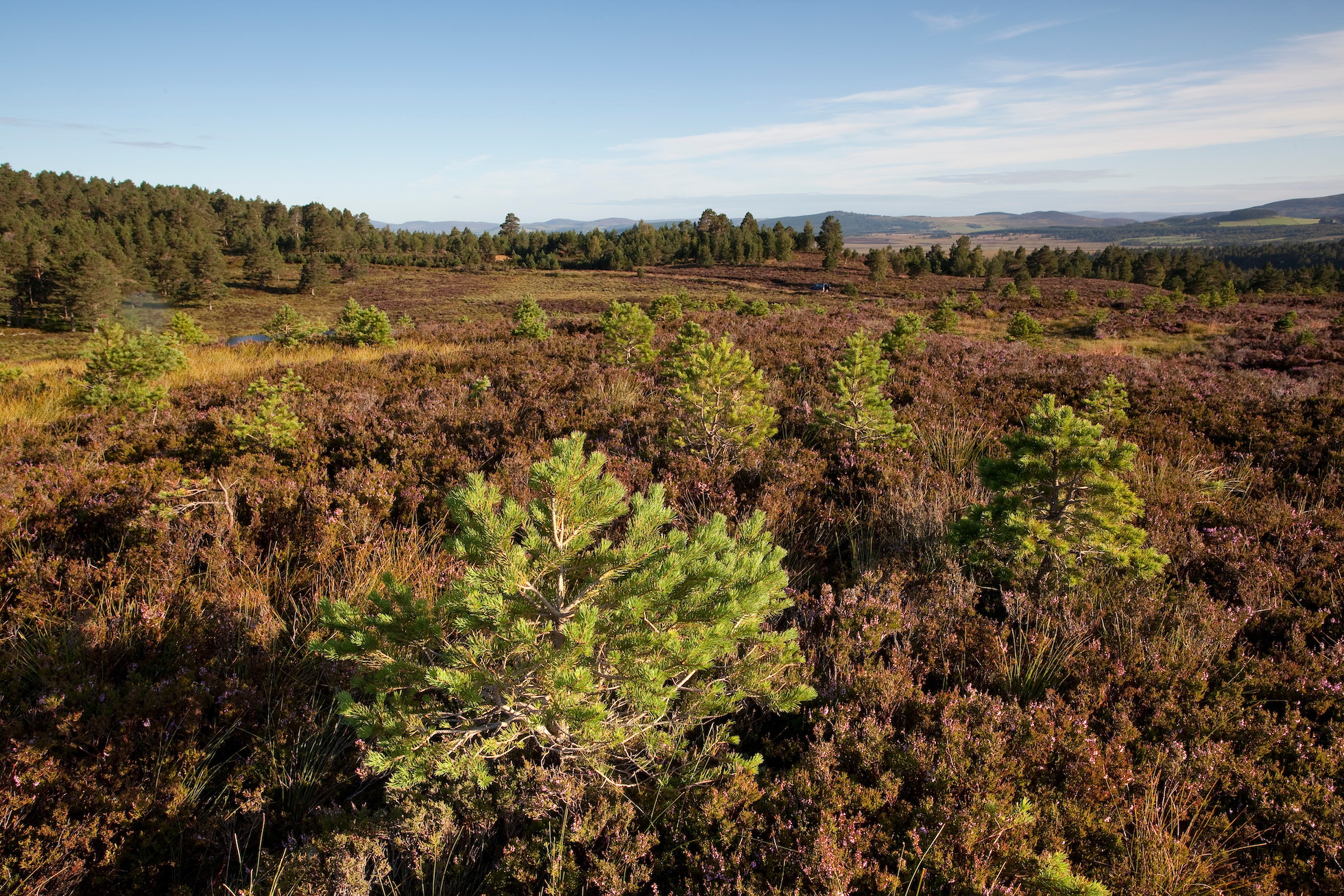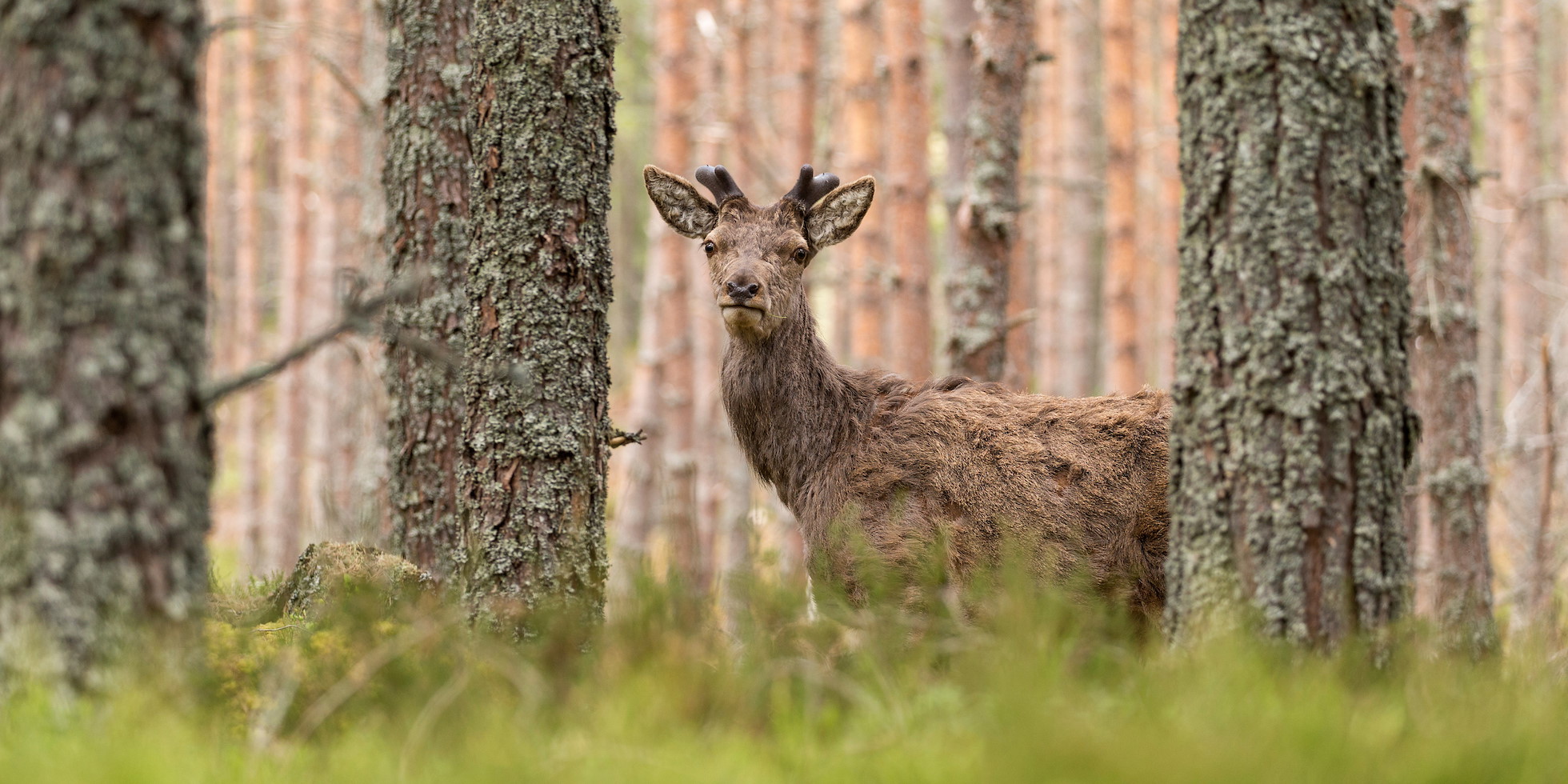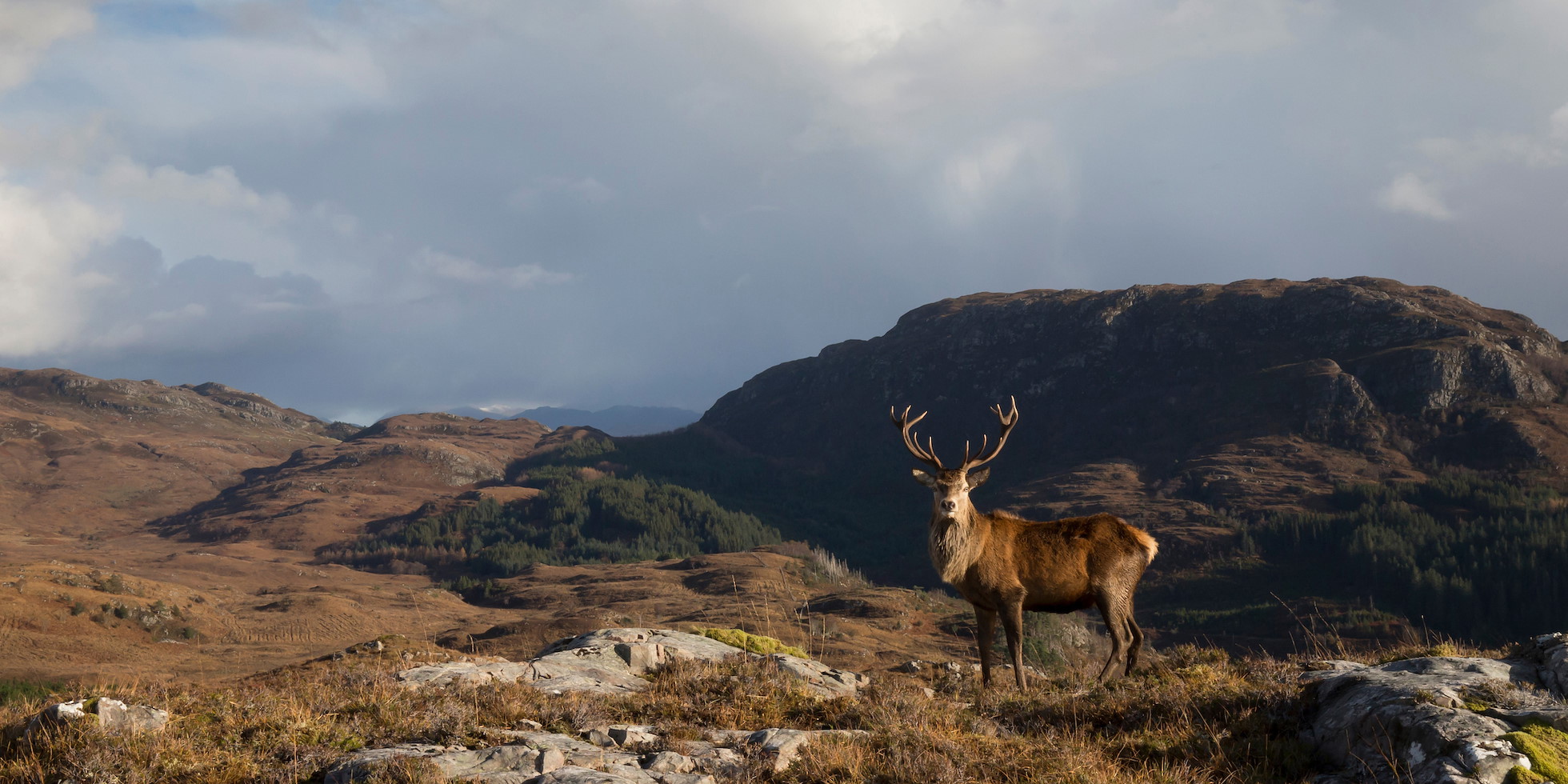Deer To Me
As a deer stalker, Jack Ward’s job is to monitor deer populations and control their impacts. Deer management can be controversial but Jack loves his job, finding motivation for the early starts and daily discomfort in his understanding of the bigger picture. He sees deer management as necessary – for the recovery of the landscape and the health of the deer themselves.
‘I’d rather forget my knife or binoculars than not have Ruadh with me,’ says Jack. Jack Ward is one of the deer stalkers working in the Cairngorms Connect landscape, and Ruadh is his dog, a reddish-brown German short-haired pointer crossed with a border collie. It’s their job to control deer numbers here, to allow forests to expand and restore huge tracts of peatland and woodland across the rugged terrain of Geal Carn, Bynack Mor and the slopes of Beinn Mac Dui.
‘I couldn’t do the job without Ruadh,’ says Jack, explaining that he and his dog work as a team. ‘At times I may ask her to wait or go in front, and at other times I’m literally just going where she tells me - with looks and body language.’
Ruadh is an expert at finding deer, her sense of smell giving her a ‘sort of superpower.’ This is especially useful in woodlands, where deer can be hard to locate, but she’s a valued companion in montane environments too. ‘We’re always together,’ says Jack. ‘So, I’m never alone. Sometimes, when it’s cold and you’re just sitting tucked into the heather together, it’s just nice to have someone to chat to.’ It’s a reminder that the work of a deer stalker can be uncomfortable, but for Jack the occasional discomfort is more than made up for by the job’s many perks.



Jack and Ruadh are an inseparable team; man and dog working together in a relationship that’s nearly as old as the hills.
‘We see eagles and all these other things that people are desperate to see, because we’re out at unsociable hours and we’re being discreet, moving quietly through the landscape.’ Often starting at 3am in the summer months, a large part of Jack’s job is simply to monitor the deer. ‘We watch more deer than anyone,’ says Jack, whose job gives him an intimate insight into the lives of the deer in these hills. ‘To see stags rutting and doing their thing is incredible, but I’ve also seen hinds giving birth. How many people have seen that? And then to be able to sneak out and they never even know you’ve been there; those are the kinds of things that stay with you.’
Jack’s affection for the deer he must occasionally kill might seem incongruous, but the hunter’s affection for his quarry isn’t strange to him. ‘If we’re on holiday somewhere, the first thing I want to do is see what deer they’ve got,’ says Jack. His enthusiasm for deer is born out of a passion for the wider ecology of the landscape. ‘I think deer are some of the most important ecosystem engineers we have,’ says Jack. ‘Almost everything you can see will have been shaped by deer; they browse certain trees or open certain glades out, and they move seeds around… they have a really vital impact.’
Understanding all this, Jack knows that it is necessary to manage the deer population. If there are too many deer, or if the deer are in the same place all the time, the habitat can suffer. ‘People talk about ecological restoration,’ he says, ‘And they might mean peatland work, planting trees, or restoring rivers and riparian woodland, but deer management underpins all of that. If you’re in the National Park, you will not get peatland restoration funding if your deer levels are more than 10 deer per square kilometre, because the trampling and grazing pressure will just undo all your hard work.’
I ask Jack about the air of controversy that has accompanied some deer culls. ‘I don’t think anyone can disagree that it works, because there’s so much evidence,’ says Jack. ‘People might say it feels unfair or it’s not very sporting, like when we’re using lamps to shoot deer at night, and that’s exactly right, because we’re not doing this for sport. Or they might prefer to have a more open landscape, but that’s not our objective. It’s just one of those things where we have to work together.’
And what about the suggestion that this model of deer management could threaten traditional deer stalking jobs? ‘I don’t think it’s a threat at all actually,’ says Jack. ‘To fulfil this type of deer management you generally need more deer stalkers on the ground. The objectives might change but the skills of maintaining and using the equipment, getting out on the hill, being safe and being able to drag a deer without exhausting yourself, those skills are all still really key.’
‘There will always be a need for deer stalkers, with or without other predators in the system.’
‘It’s never going to be something that we just walk away from,’ he adds. ‘There will always be a need for deer stalkers, with or without other predators in the system. The deer population may come down for a while, and then one day we expect it will come back up, but either way, stalkers will always be important, because we understand the deer and the impacts they can have, both positive and negative.’

In Abernethy, at the heart of Jack’s stalking beat, an envirocentric approach to deer management is delivering clear benefits for the health of the expanding forest.
Jack firmly believes the deer management he is undertaking benefits the deer too. ‘We know our calving and fecundity rates are way above the national average because the deer are healthier. I think it’s always good to ask the question: are we doing the right thing? And I do think about it, but we’ve just got so much evidence that our approach is working.’
‘Stalking immerses you in all the little details, so that you become part of the environment.’
‘I think people often feel separate from the landscape,’ reflects Jack. ‘But stalking immerses you in all the little details, so that you become part of the environment. You see the land in a different way. I know where the dry patches are, where I can place my feet to make less noise, which rock will catch the wind and things like that. I think it’s just because you’re out with the deer all the time, you’re using the same elements, it becomes a subconscious thing.’
Jack clearly loves his job. He believes what he is doing is worthwhile and is fortunate to see the results of his hard work unfolding before him. For him, the future is exciting and full of promise, both for the landscape and the deer. ‘Two nights ago, I was out in the evening and saw three hinds. I got to within 30 metres of them and enjoyed beautiful views of these animals which I wasn’t going to disturb. I was just happy to see three big, healthy deer moving through this regenerating woodland – you can’t really beat that.’



